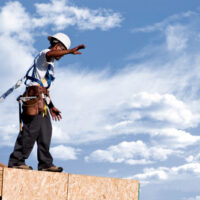Owner and Contractor Held Liable for Trip and Fall Injury on Construction Site at New York’s Plaza Hotel

A laborer involved in demolition work on a construction site at the Plaza Hotel in New York was injured when she tripped and fell on a defectively-constructed ramp. The ramp had been constructed to provide access between a hoist car platform and the 10th floor about two to four feet below the platform. As the plaintiff stepped onto the ramp – a system of wooden planks with wooden railings – her foot went through the ramp, and she fell down face forward. The injured worker sued the building owner and construction manager under New York Labor Law sections 240(1) and 241(6).
The Supreme Court, New York County, in the case of Davis v. CPS 1 Realty GP LLC and Tishman Construction Corp., granted summary judgment to the plaintiff regarding liability on both counts. This means that the judge decided that on the facts presented by the parties, the plaintiff was entitled to judgment as a matter of law, and it is not necessary to hold a trial on the issue of the defendants’ liability. The case will still proceed to mediation and possibly trial on the issue of damages, or how much compensation the plaintiff should receive, unless the parties agree to a settlement amount.
The defendants in the case were the building owner (CPS 1 Realty) and the manager of the construction project or general contractor (Tishman). Those parties in turn sued the plaintiff’s employer, Venetian Enterprises, a subcontractor hired to perform demolition work on the project. Venetian for its part sued Atlantic-Heydt, the company responsible for constructing and installing ramps and landings at the site. But regardless of possible liability or indemnification on the part of the subcontractors, New York Labor Law generally places the ultimate responsibility to provide a safe work environment on the property owner and general contractor.
Scaffold Law Liability
Section 240(1) – the Scaffold Law – requires building owners and contractors to erect scaffolds, hoists, ladders, and other safety devices to give proper protection to workers on construction projects. This law is designed to prevent gravity-related accidents or accidents caused by elevation differentials, such as falling from a height. The court held that the ramp was a safety device covered by 240(1), and that a defect in the ramp caused the plaintiff’s elevation-related injury.
Liability for Trip and Fall Hazard
Section 241(6) also requires owners and contractors to provide reasonable and adequate protection and safety for workers performing the inherently dangerous activities of construction, excavation and demolition. To hold owners and contractors liable under this law, the plaintiff must plead and prove that a violation of a specific Industrial Code requirement was the proximate cause of the injury. Here, the plaintiff cited three specific sections of the Industrial Code: 12 NYCRR 23-1.7(e)(1) (tripping and other hazards); and 12 NYCRR 23-1.22(b)(2) and (3).4 (construction of runways and ramps). The court held that the ramp in question was not sufficiently supported and braced to comply with these provisions, and therefore the defendants should be liable under 241(6).
